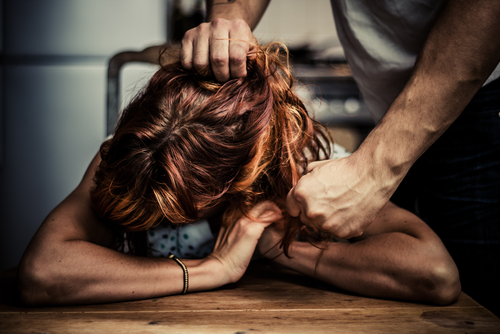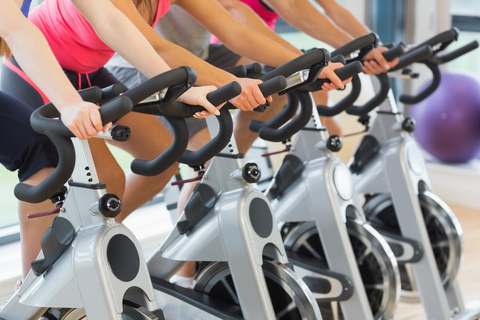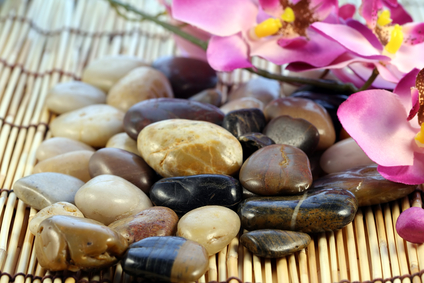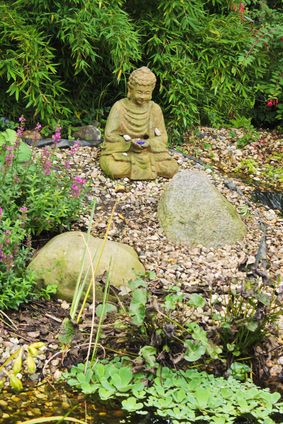Our world and the culture of violence against women and girls
We live in in a world, where efforts to prevent violence against women and girls is inadequate, according to a five-part series published today in The Lancet journal. The statistics are startling:
- Almost a third of women worldwide have experienced either physical or sexual partner violence
- 7% have experienced sexual non-partner violence
- Nearly 70% of girls are married before the age of 18, many against their will
- Up to 140 million women worldwide have undergone female genital mutilation
Here in the U.S., the culture of violence has extended to the internet, where it is seemingly acceptable for men to threaten and coerce women who disagree with them or who try to enter the Men’s Club. If you’ve not heard about #Gamergate or #Celebgate, (or #Ubergate, for that matter) I urge you to dig deeper at challenges pervading wealthier, Western nations. And that’s likely the tip; consider the Cosby debacle or growing reports of sexual assaults on college campuses. Just look at this latest piece on the culture of rape at University of Virginia; the implications are horrible and the code of silence, widespread and misdirected. As the Lancet authors point out, “rape is often a matter of stigma for the victim; violence in the home has been considered a private affair. Turning of the head and closing of eyes have occurred despite [the evidence].”
The Lancet Series suggests that while global attention to violence against women and girls has increased, not enough is being done to prevent the violence from occurring in the first place. Moreover, rigorous data on interventions that work on the prevention front — even in high-income countries — are scarce. Still, the little evidence they have gathered suggest that a multi-pronged strategy is most effective, one that “holistically addresses the individual, interpersonal, community and societal drivers of violence. A key place to start? Correcting gender-power imbalances.
The Series authors write that “women’s and girls’ vulnerability to violence is deeply rooted in the greater power and value that societies afford men and boys in access to material, symbolic and relational resources compared to women.” Moreover, “this gender-based risk is often compounded by other forms of discrimination and inequality based on, for example, race, class, ethnicity, caste, religion, disability, HIV status, migration status, sexual orientation and gender identity, which affect both exposure to violence and the experiences of response.”
Mind you, there has been great strides on the societal level with regard to efforts to change legal and policy norms and recognize this type of gender-driven violence as human rights violation. However, as the authors aptly point out, laws and policies may provide the framework for the unacceptability of violence against women and girls but they are insufficient.
A strategy that has started to take hold is involving men and boys in efforts to stop violence. It is imperative the societal norms that perpetuate gender inequality and violence be reversed and that the role of men and boys as allies in the work to prevent and end violence against women and girls is elevated. Let me be clear: not all men are violent; men who perpetuate or practice violence against women have themselves, often encountered high levels of violence. The use of violence against women is a source of power accorded to men in many settings; take the tech space, for example. And, if cultural norms dictate that “women fall under men’s control, then physical or sexual force and threat are ways to achieve this.”
Still, investment in violence prevention is inadequate. From an economic standpoint and compared to national public expenditure on sports or election campaigning (both of which are estimated in the $3 to $5B range), the U.N. has only benchmarked $100M for investment into violence programs. Yet, the indirect costs are astronomical; the Series emphasizes that women who are exposed to or the victims of violence make greater use of health services than non-abused women, even years after the violence has ended. Violence against women and girls also affects productivity and contribution to social and economic development; the annual costs of intimate violence partner in Western societies ranges from $5.8B in the US (2003 figure) to £22.9B in England and Wales (2004) and $4-5B in Australia. The study Authors also emphasize that while many governments have developed national plans of action to address violence against women and girls, few had dedicated budget lines and domestic spending to support them, despite evidence that points to a strong economic rationale for such policies (for example, the U.S. could save an estimated $23,673 per woman prevented from experiencing violence).
Aside from government allocation of funding and altering societal norms, an important conclusion of the Series is that the healthcare sector has an important role to play in shifting attitudes. Victims are seen regularly in many different health settings and yet programs are not adequately synergized to affect change. By and large, practitioners are taught that their role is to treat disease and related symptoms and many harbor prejudice against involvement in so-called private matters. The authors also say that there is little rationale for distinguishing between preventive programs directed at smoking, drug abuse and healthy eating versus those that raise awareness about the health burden of violence and the broad acceptance of norms that perpetuate it.
“Violence against women and girls is not just another women’s issue, but is a public health and development problem of concern to all.”
There are many ‘Gates in circulation. Daily, we read about another case of online harassment, another case of rape, another threat, another sign of abuse. Not only do we need to reverse the tide; we need to prevent it.
Read More
Physical activity for prevention: how much, how often, how long?
Physical activity. You can’t beat it for preserving bone, maintaining weight and boosting endorphins and mood. Lord knows that there are reams and reams of data demonstrating its value. But confusion remains with regard to how much, how often and how long, i.e. what do you need to do to prevent physical and cognitive decline during menopause and thereafter?
A new systematic review of the literature appearing online in Menopause journal attempts to answer this very question. In it, the authors searched the literature published between the years 2009 and 2014 specifically as it related to physical activity and women’s physical and mental health and ultimately settled on 21 studies. The findings?
- In postmenopause, body composition and higher physical activity levels are associated with better physical functioning however, because frailty may actually begin in midlife, developing or maintaing a health lifestyle during the middle years is imperative.
- The higher the level of physical activity, the more significant the decrease in the odds of dying from any cause. Importantly, this remained true even after the researchers took into account factors like age, education, ethnicity, depression and comorbidities. Conversely, women who were more sedentary had a 98% higher risk of dying than their physically active peers!
- Exercises that improved cardiorespiratory capacity had the greatest impact on physical health. Cardiorespiratory capacity refers to the ability of the heart and lungs to deliver oxygen and remove CO2 to/from the skeletal muscles during physical activity. Here, higher is better. The question that remains unanswered is whether or not the prescription for cardiorespiratory boosting exercise change as we grown older?
- A key difficulty with activity is adherence. Consistently, women report that they abandon exercise due to time constraints, or personal, cultural or environmental factors.
- All of the studies found that physical activity was associated with lower rates of cognitive decline but the magnitude of this effect was inconsistent. Also unclear was the impact of physical activity on health-related quality of life.
The bottom line is that you need to MOVE, often, intensely and frequently. Do exercises that boost your cardiorespiratory capacity, e.g. jogging, running, swimming, cycling, kettlebells or interval training. And lose the excuses; make the time now or you’ll suffer later. It truly IS an either/or!
Read More
Guyside: men and rape culture
 Two incidents have me thinking about serious and distressing things these days.
Two incidents have me thinking about serious and distressing things these days.
In the space of a few days, a university in my city had two “sex scandals” hit its campus. The first involved a private online conversation among four male executive members of the university’s student federation. The conversation centred on the female president of the student federation, and contained some quite vile words and sentiments. When the president was made aware of the conversation, she brought it to an executive meeting, where she was threatened with legal action by those she’d exposed. The conversation was then leaked to a blogger who wrote a post called “Rape Culture at the University of Ottawa.” Shortly, the four men resigned in the wake of public outcry.
Within a few days of this story becoming public, the same university suspended its men’s hockey program for the remainder of the season after it was announced that several members of the team were being investigated after an alleged sexual assault that took place on a road trip.
The university undoubtedly had a bad week. But I think that it was an up-and-down week for anyone thinking about sex and gender and sex roles who was aware of the discussion around these incidents, which to a great extent centred on “rape culture.”
Some people heard the term and recoiled. One talk radio host responded with the question “Are feminists saying the 20,000 men at this university are all rapists?” Others (myself included) tried to learn what exactly was meant by the term and what we could do. The best definition that I’ve heard of what rape culture is came from a friend and centres on the idea that rape, or sexual assault, is simply a part of life, and can be seen in behaviour like victim-blaming, minimizing, and objectifying.
I was a sometime participant in the “men’s movement” of the 1990s. While I never bought in to the whole “Iron John” thing, I did — and do — spend some time thinking about my role as a man and its relationship to the roles women play in society. It seems impossible to completely separate incidents of sexual assault, of online harassment, and, in the end, of the murder of women, from the social factors that form the expectations and behaviours of men.
And my horrified reaction to the online chat of supposed student leaders led me to wonder if I was turning into one of those curmudgeons who thinks that everything’s wrong with these kids today. But I don’t think that; human beings are probably a bit better today than they have been in the past, overall.
What I do think is that there needs to be a social change around the elements of rape culture similar to what’s happened around drunk driving. One example of how that has been done well is the “Don’t be that guy” campaign, first created by an Alberta-based coalition of community organizations and since used across the country.
The idea behind “Don’t be that guy” is simply stated: “put the onus on the ones responsible for the assault to be responsible for stopping it.” And as I’ve gotten to this ripe old age, I think that not only do I have an obligation to “not be that guy”, I want to help younger men to understand that sexual assault isn’t EVER okay. How do I do that? For me, there are two ways. The first is to model GOOD behaviour. To not make the rape joke (how can that be a joke?!), to not use actions or language to make women into sexual objects.
The second is to call out BAD behaviour. I think it’s incumbent on good guys (I count myself in that group) to act when someone starts to act out. It could be as dramatic as interrupting a physical assault, or speaking up when a construction worker catcalls a woman walking past. If nobody reacts to an action or a word, it can be interpreted as apathy at best, or approval at worst. I don’t want that. And if it means I have to shake myself out of my shyness or my comfort zone, that’s a small price to pay. The grandparent of all these movements is Hollaback!, and thankfully, there’s an active group here in my city.
What else can men do to combat this problem? There’s a lot of worthwhile thinking about this at The Good Men Project. What are your thoughts?
Read MoreInternational Women’s Day – Be beautiful, inside.
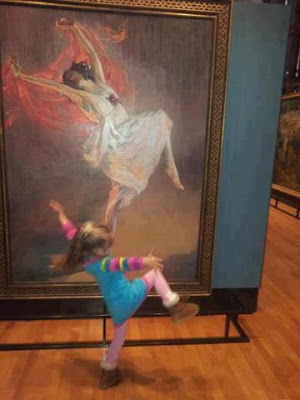 Tomorrow is International Women’s Day. In lieu of a regular post, I thought I’d use the space to highlight some of the most recent news that have most impacted me of late and have gotten me thinking really hard about how we treat one another.
Tomorrow is International Women’s Day. In lieu of a regular post, I thought I’d use the space to highlight some of the most recent news that have most impacted me of late and have gotten me thinking really hard about how we treat one another.
I feel that we have a responsibility to the daughters, nieces and young women in our lives to show them how to live stronger and positively, with greater self awareness, self esteem and self love. Lately, the internet has been filled with stories of teen suicides and bullying; it’s the modern day version of tar and feather gone bad. Just this week, Rolling Stone published a sobering piece about the last days of a young girl who was literally marked and humiliated, and later found by her mother hanging from a belt in the bathroom. ‘Sexting, Shame and Suicide‘ is a must-read, must-share and must-do. Time to take action and stop the madness.
Importantly, bullying is not age-specific. In fact, former blonde bombshell Kim Novak, or her face, entered the Twitter Hall of Shame on Oscar night for her poor choices in plastic surgeons. The Atlantic’s ‘Getting Picked on at the Oscars at Age 81 ‘ carries the message that sexism never dies and that women have an obligation to maintain their looks for society. Novak’s actual story is a sad one and what rings true is that the history of ridiculing women is a long one; technology has made it louder.
But the news isn’t all bad. While Hollywood and the Twittesphere were in the act of stripping down one of its own, they also provided a forum for another – actress Lupita Nyongo – to deliver a forceful speech about the validity of dreams and owning your journey. Earlier, at a luncheon hosted by Essence Magazine, she shared important words that you may want to share with the young girls in your life, words that focus on the beauty within that will help women ‘get on with the business of being beautiful inside.’
And while you get on with the business of being beautiful from the inside out, be sure to reach out to a fellow sister; social interactions are good for your (and her) heart and soul. Speaking of which, I would like to send out some prayers to a sister of mine who is undergoing surgery this morning. Kim – you’ve got this.
Whether you believe that you have many do-over’s or only one opportunity to do right in this life, as women we have an obligation to one another to make the path for the next generation a bit smoother. The collective power of many makes a lasting impact. Reach out and do a kindness this weekend. Find joy. Dance. Rejoice. Be beautiful, from the inside.
Read More
Empowering Myself Before & After Surgery: Guest Post by Cyma Shapiro
Did you catch last Friday’s post about reaching deep to find the strength to ask for help? Cyma Shapiro, author of The Zen of Midlife Mothering, did and sent me a wonderful post about her own surgical experience in solidarity. Here it is, in its entirety; I hope that it inspires you as much as it did me.
I’ve been very lucky. In my lifetime, I’ve enjoyed good health, good friends and not a lot of unforeseen external circumstances. However, this recently changed when I needed surgery.
It’s difficult to explain the (many) steps I took leading up to this decision, but as insignificant as it might have been, how monumental it all felt. And, while there are far more people struggling with far more serious illnesses, my recent foot surgery was so pivotal in my life that I’d like to share my short journey with you.
As an avid and passionate proponent of Eastern modalities, I’ve spent an entire lifetime focusing on healthy eating, healthy living and healthy practices. I believed that in doing all of this, I’d be spared more serious complications. So, when I broke my foot last year, I felt as if my world had shattered. I was literally stopped dead in my tracks – a difficult journey for someone as active as I am (rock climb, bike, hike, etc.). I had no choice but to heed the call. And, I needed to do just what the doctor ordered: stop.
So, for six months, I tried to smell the roses: I reflected on the state of my life and of my “mid-age.” I thought long and hard about the things that I did and didn’t accomplish, and of the….well….mortality of it all. Most importantly, I realized that my apparently well-ordered life was certainly not that – that many more things (than I’d ever considered or thought possible) were simply out of my control.
To me, having surgery felt like death – not only for the potential perils and outcome, but for what the circumstances suggested – that I simply was no longer as immortal as I believed.
And so, in counting down the months, then weeks, and then days before the surgery, I fervently kept up every practice I knew – praying, breathing, exercising, meditating, reading, etc. And, as the weeks became days, I nearly lay myself prostrate in asking for help, guidance and support during this period. I also did one more thing: I asked my closest friends to pray for me and send light and love.
Nearly immediately, I felt an energy shift in my body. And, as much as the panic threatened to overtake me, the internal support I felt helped propel me forward.
On the day of surgery, I asked for help from the support nurses (requesting that they hold my hand and pray for me) and told the doctor that I had prayed for him. (I had, asking for guidance and love from the support team. To me, we were all in this together – I’d put a photo of him up on my computer weeks earlier.)
Today, I am healing. I am also doing fine. However, I have also changed – in my feelings about Western medicine, about how a higher power is truly in charge, in learning how tough and resilient I really am (despite my overwhelming fears otherwise), and how the power of others can support you in your life.
While I realize that some of you may scoff at this, believing this to be a minor blip in the journey of life, I believe that the success I’ve experienced here will translate into greater successes, should more serious things arise in my life. And, for this deeper understanding and in climbing another rung of life’s many twists and turns, I am so very grateful.
About Cyma…
Cyma Shapiro, 56, is the writer/creator of NURTURE: Stories of New Midlife Mothers (www.MidlifeMothers.org), the first art gallery show dedicated to women choosing motherhood over 40 (now traveling North America), and the subsequent blogsite, www.MotheringintheMiddle.com, for all-things midlife mothers. A speaker and writer for several sites including Huffington Post, whose work has been featured on NPR and on Psychology Today (online), Cyma is passionate about supporting women who choose later motherhood, and giving them a face, voice, and forum. She is the mother of 9 and 11-year-old children and 28 and 30-year-old stepchildren. She recently published The Zen of Midlife Mothering (essays from MotheringintheMiddle.com) – the only anthology on the market by and for midlife mothers (and fathers).
Read More
Help!
If you are as independent as I am, asking for help might be alien to you. Personally, I am getting better at it. But I still have the inclination to try to do something first on my own rather than rely on someone else to do for me, even if it may be detrimental.
I am having surgery today. I’ve been in significant discomfort for weeks now and that discomfort has been increasing daily. And I was going to drive myself to the procedure until my friends stepped in and took over. Don’t you think that I would realize how silly that idea was?
So, while I spend today contemplating the ‘thank goodness, folks who love me stepped in,” I challenge you to ask yourselves the following question:
When was the last time you asked for help? Better yet, how easily do you ask for and receive help?
Reading Karen Rosenthal Hilsberg’s “Lessons in Living” and her struggle to make sense of a life unraveled as her husband dies, I can’t help but reflect on a close friend who was ill several years ago. Despite a ‘take no prisoners’ attitude, he had trouble acknowledging the seriousness of his condition and even more trouble asking for support. Quite honestly, he doesn’t do too well in that department and neither do I. However, like him, I readily offer assistance to those I love and care about, whenever I can.
So, why the divide between offering and taking?
Hilsberg writes that “what I learned during this intense time of life was profound. I learned to ask for help from others.” Utilizing the mindfulness practice of the Zen Master, Buddhist monk and scholar Thich Nhat Hanh and the Buddhist Master Thich Phuoc Tinh, she says that she discovered that asking for help really wasn’t much different than providing it, that the helper and ‘helpee’ were intertwined, unable to exist without the other. By allowing assistance, she was able to provide others who cared about her and her family an opportunity to “be of service and to practice generosity” and in doing so, make a shift away trying to do everything on her own. Most importantly, by reflecting on how much she personally enjoyed being of service when loved ones needed her, she was able to accept how appropriate and okay it was to actually ask for help from others — to allow them to “do” as much as she did. The result? Her “wellbeing improved as [she] felt [her] burden shared by many hands.”
As caretakers, many women often do not adapt well to being on the “receiving end.” And yet, most of us are aware of the importance of social ties, friendships and support to our health and wellbeing, particularly as we age. So why do we find it so difficult to ask for and receive help? How do we acknowledge that be cared for does not equate to losing power or control but actually improves outlook, wellbeing, and ability to deal with any challenges that we might be facing, that allowing others to “do” empowers and does not ‘de-power?’ Is it fear of refusal? Or fear of letting go?
Mastering the art of asking for help is difficult. However, it behooves us to do so, not only for our wellbeing but for the wellbeing of those around us who wish to help.
My friend deserved the kind of care that he has provided to others in his life for most of his life.
Guess what?
So do I.
And so do you.






